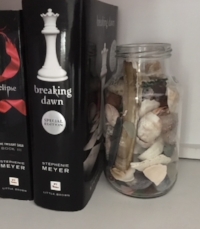Don’t Stress When Getting Dressed: 5 Tips to Clear Closet Clutter
/Do you feel stress every time you open your closet? Your closet should make you smile. The number one issue I see with clothing closets is that they are overstuffed. Try these tips to clear the closet clutter and make getting dressed easier.
Start to dig into your closet. Pull out all the things that don’t belong there, like papers, tools, stuffed animals. Put these items aside to work on later.
Gather and hang similar pieces of clothing together - shirts with shirts, pants with pants. Do the same with any items on shelves.
Within each category of clothing, sort by color. This is an instant pick-me-up for your closet, and you’ll be able to see how many white shirts and black sweaters you actually have.
Hang one item on a hanger or else it will be impossible to see what’s beyond the first layer of clothing.
Organize your accessories. Use hooks to hang belts, bags, or jewelry. Clear out and donate items you really don’t use anymore. The top shelf of the closet can be for hats or dressy bags/shoes that don’t get used as often.























